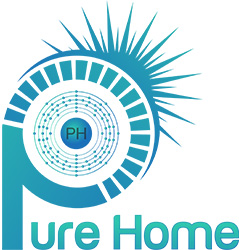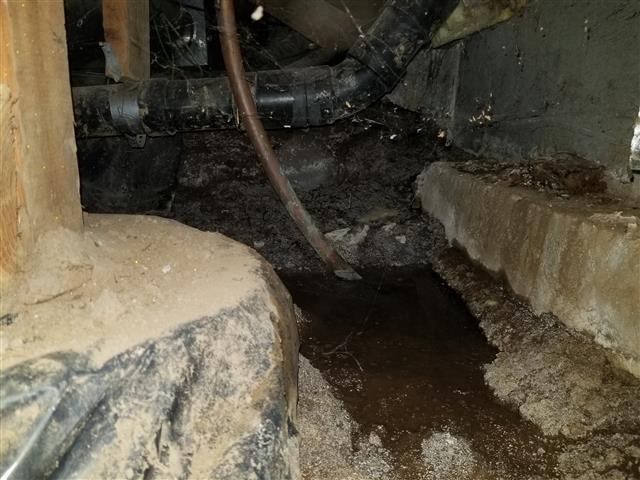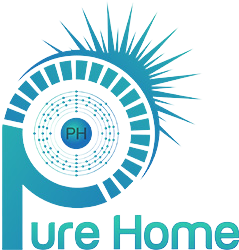Ultimate Guide To Crawl Space Water Removal
Crawl spaces are often forgotten areas in homes, but when water seeps in, it can lead to serious problems.
In this guide, we will explore what a crawl space is, why water in the crawl space is a problem, and what causes it. We will also discuss how to identify water in the crawl space, steps to remove it, and crucial tips for preventing future water intrusion.
Stay tuned to learn everything you need to know about crawl space water removal as well as mold remediation for your crawl space.
Key Takeaways:
- Water in crawl spaces can be damaging and lead to mold growth, so it’s important to remove it promptly.
- Causes of water in crawl spaces include groundwater seepage, plumbing leaks, and flooding.
- To prevent future water in crawl spaces, maintain proper grading and drainage, regularly inspect and maintain the space, and consider waterproofing measures.
What is a Crawl Space?
A crawl space is a shallow area within a house or structure that is typically located between the ground and the first floor, providing access to plumbing, wiring, HVAC systems, and ventilation.
Usually found beneath the home, the crawl space serves as a crucial element of the house’s foundation, allowing homeowners and professionals to access and maintain vital systems without the need for extensive excavation or disruption. Foundation experts emphasize the significance of maintaining these spaces to prevent issues such as moisture buildup, mold growth, or pest infestations. This area often requires proper insulation and sealing to ensure energy efficiency and structural integrity of the property.
Why is Water in the Crawl Space a Problem?
Water in the crawl space poses significant problems such as increased moisture levels, leading to mold, mildew, pest infestations like termites, and potential damage to the foundation and structural integrity of the house.
The presence of excess moisture in the crawl space creates an ideal environment for mold and mildew to flourish, posing health risks and emitting foul odors throughout the home. This damp environment attracts various pests like termites, cockroaches, and rodents, which can cause extensive damage to the property’s infrastructure. Over time, the structural integrity of the house may be compromised due to wood rot and decay caused by the continual exposure to water. Addressing these issues promptly is crucial in maintaining a safe and habitable living space.
What Causes Water in the Crawl Space?
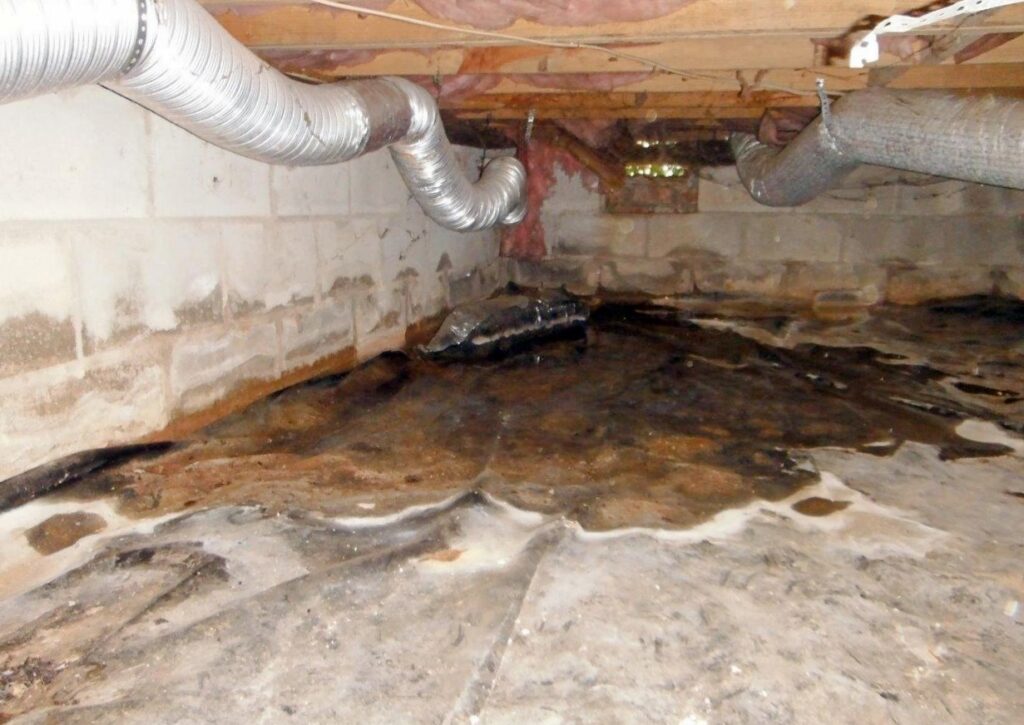
Water in the crawl space can be caused by various factors, including groundwater seepage, plumbing leaks, and flooding from external sources like heavy rainfall or drainage issues.
Groundwater seepage is a common culprit that leads to water accumulation in crawl spaces. When the soil surrounding the foundation becomes overly saturated, water can infiltrate through the walls and floor, seeping into the crawl space. This phenomenon is often exacerbated by poor drainage, inadequate waterproofing, or high water tables in the area.
Plumbing leaks, on the other hand, can introduce water directly into the crawl space from faulty pipes, fittings, or fixtures. Even minor leaks over time can result in significant moisture buildup, contributing to dampness and potential structural damage.
Flooding events, whether from heavy rainstorms or external drainage issues, pose a significant risk of water intrusion into the crawl space. During such occurrences, excess water can quickly find its way under the home, seeping through any vulnerabilities and causing a range of problems.
Groundwater Seepage
Groundwater seepage into the crawl space occurs when water from the surrounding soil penetrates the foundation walls or floor, leading to increased moisture levels and potential water damage.
When groundwater infiltrates a crawl space, it can create a damp environment that is conducive to mold and mildew growth. The excess moisture can also attract pests like termites and wood-decaying fungi, causing structural damage to the building. High moisture levels in crawl spaces can lead to poor indoor air quality, affecting the health of occupants. Addressing water seepage issues in crawl spaces is crucial to maintain a healthy and structurally sound environment within a property.
Plumbing Leaks
Plumbing leaks in the crawl space can result from damaged pipes or fittings, causing water to escape and accumulate within the confined area, posing risks of structural damage and mold growth.
Leaking pipes are often the culprit behind plumbing leaks in crawl spaces. Over time, wear and tear, corrosion, or even shifting foundations can lead to cracks or holes in the pipes, allowing water to seep out. This water then pools in the crawl space, creating the perfect environment for mold to thrive. If left unattended, the dampness can weaken the structural integrity of the building, leading to costly repairs. It is crucial to address these leaks promptly to prevent further damage and maintain a healthy indoor environment.
Flooding
Flooding in the crawl space can occur during heavy rains, improper drainage, or plumbing issues, leading to standing water that can damage the foundation, promote mold and mildew growth, and attract pests.
Standing water in the crawl space poses significant risks to the structural integrity of a home. It can weaken the foundation over time, potentially leading to costly repairs. The damp environment created by the flooding provides the perfect breeding ground for mold and mildew, which can compromise indoor air quality and pose health hazards to inhabitants. The presence of stagnant water attracts various pests, such as rodents, insects, and termites, further exacerbating the potential damage to the property.
Implementing proper drainage solutions and ensuring timely remediation are essential in safeguarding against these hazards.
How to Identify Water in the Crawl Space
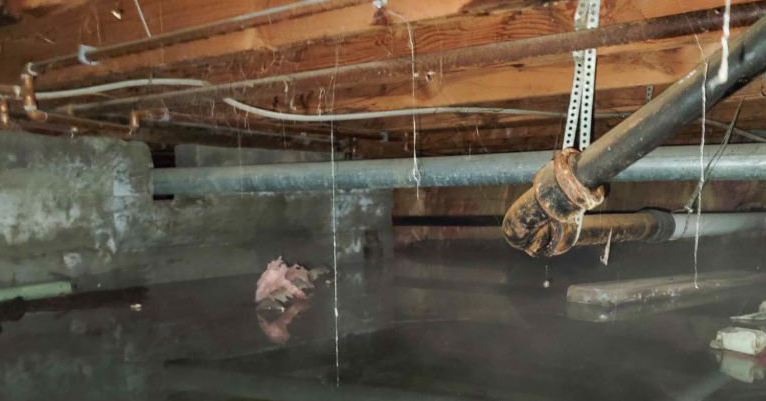
Identifying water in the crawl space involves looking out for signs such as musty odors, visible standing water, and high humidity levels, indicating potential moisture issues that need to be addressed.
One common method for detecting moisture in crawl spaces is to check for musty odors, which can indicate the presence of mold or mildew growing in damp conditions.
Monitoring humidity levels using a hygrometer can provide valuable insights into the moisture content in the air within the crawl space.
Visible water, whether as standing puddles or damp spots on walls, is a clear indication of water intrusion and a sign that waterproofing measures may be necessary.
Musty Odors
Musty odors emanating from the crawl space are often indicative of water accumulation, mold, or mildew growth, signaling potential moisture-related issues that require investigation and remediation.
When left unaddressed, these musty odors can serve as a telltale sign of a more significant problem lurking beneath the surface. The presence of mold spores in the air can exacerbate respiratory issues and lead to serious health concerns, making timely detection and elimination crucial to maintaining a healthy indoor environment. Understanding the correlation between musty odors and moisture problems is essential for homeowners to take proactive measures to prevent the potential hazards associated with mold growth.
Visible Standing Water
Visible standing water in the crawl space is a clear sign of water accumulation, potentially resulting from poor drainage, plumbing leaks, or flooding events, necessitating immediate attention to prevent further issues.
Plus causing structural damage to the foundation and wooden supports, standing water in crawl spaces can create a conducive environment for mold and mildew growth, posing health risks to occupants. The excess moisture can also attract pests like termites, further compromising the integrity of the structure.
- Addressing the root cause of the water intrusion, whether through poor grading around the foundation, clogged gutters, or inadequate drainage systems, is crucial for long-term prevention.
- Installing a proper vapor barrier and ensuring effective water management solutions such as French drains or sump pumps can help redirect water away from the crawl space,
High Humidity Levels
High humidity levels in the crawl space can lead to moisture accumulation, creating conducive conditions for mold growth, pest infestations, and potential damage to the structural integrity of the house.
Excess moisture in the crawl space can seep into the walls and floors, weakening the foundations over time. Mold spores thrive in damp environments, releasing allergens and toxins that can pose health risks to inhabitants.
Pests like termites and cockroaches are attracted to dark, damp spaces, making the humid crawl space an inviting refuge for infestations. These pests not only damage property but also carry diseases, presenting a threat to the household’s well-being.
Steps to Remove Water from Crawl Spaces
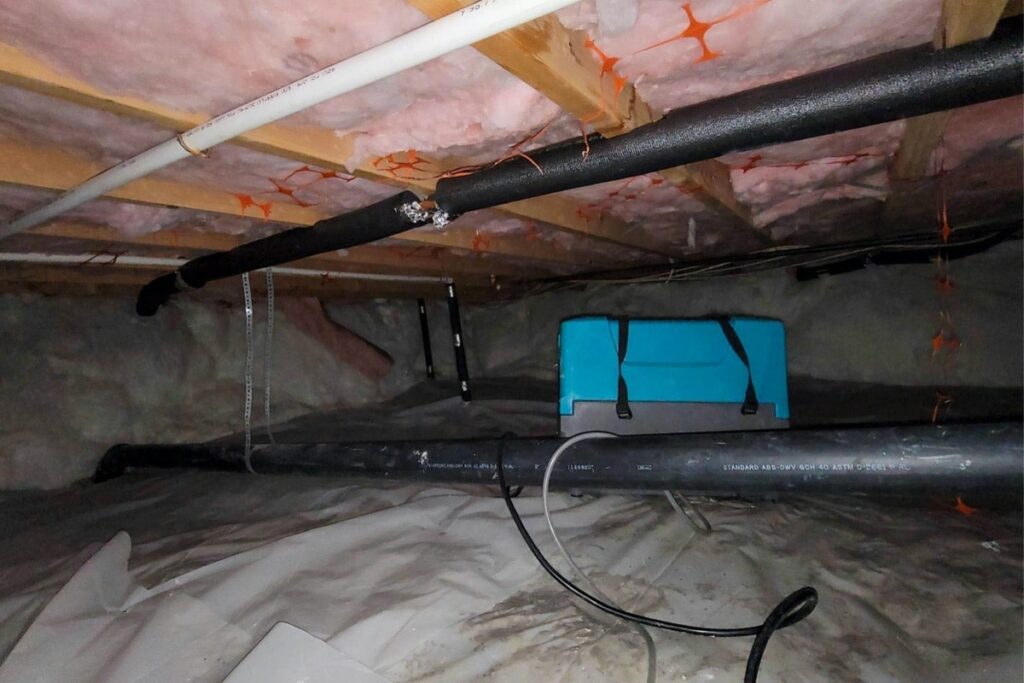
Efficiently removing water from crawl spaces involves a series of steps, including safety precautions, identifying the water source, removing standing water, drying out the space, and repairing any damage caused by water infiltration.
One crucial tool for water removal in crawl spaces is a sump pump which helps in efficiently pumping out the excess water. First and foremost, before entering the crawl space, it is important to ensure proper ventilation and use protective gear such as gloves and masks. Subsequently, identifying the water source is essential to address the root cause and prevent further water entry. Once the standing water is removed, employing appropriate drying techniques like dehumidifiers and fans can aid in drying out the space effectively. The repair procedures involve fixing any damaged insulation, flooring, or walls to prevent mold growth and structural issues in the future.”
Safety Precautions
Before initiating water removal from crawl spaces, prioritize safety precautions such as wearing protective gear, ensuring proper ventilation, and turning off electrical sources to minimize hazards.
Proper protective gear, including gloves, goggles, and masks, is critical to prevent exposure to contaminants and potential injuries during the water removal process. Adequate ventilation is essential to disperse any harmful fumes or gases that may accumulate in confined spaces.
Turning off electrical sources is crucial to avoid the risk of electric shock or fires. It’s important to remember that water and electricity are a dangerous combination, so always prioritize safety when dealing with water removal in crawl spaces.
Identify the Source of Water
Identifying the source of water in crawl spaces involves inspecting for plumbing leaks, checking for groundwater seepage, and assessing potential points of entry to address the root cause of water infiltration.
When dealing with crawl spaces, one must understand that water-related issues can lead to a host of problems if left unchecked. Addressing these concerns promptly can prevent structural damage, mold growth, and other health hazards.
- Inspecting for plumbing leaks is crucial as even a small leak can escalate into a major issue over time.
- Conducting thorough checks for groundwater seepage helps in understanding the external factors affecting moisture levels within the space.
- Evaluating possible entry points for water infiltration ensures a comprehensive approach to resolving the issue.
Remove Standing Water
Promptly removing standing water from the crawl space using tools like a sump pump or wet vacuum is essential to prevent further moisture damage, mold growth, and structural deterioration.
Failure to address standing water in crawl spaces can lead to a host of problems, including structural weakening and health hazards. By utilizing a sump pump, excess water is efficiently removed, reducing the risk of moisture-related issues. Wet vacuums are also effective in extracting water quickly and thoroughly, aiding in the restoration process. Implementing proper drainage systems is crucial to prevent water accumulation in the future, ensuring the longevity and safety of the crawl space environment.
Dry Out the Space
Drying out the crawl space post-water removal is crucial to eliminate excess moisture, inhibit mold growth, and restore a dry environment using methods like ventilation, dehumidifiers, and insulation.
Effective ventilation is key in drying out the crawl space. Proper airflow helps to remove trapped moisture and promote evaporation. By ensuring there are enough vents or implementing fans, fresh air can circulate through the space, aiding the drying process.
Dehumidifiers play a vital role in reducing humidity levels. These devices extract moisture from the air, preventing condensation and mold formation. Placing a dehumidifier in the crawl space can significantly expedite the drying out process.
Repair any Damage
Repairing any damage caused by water infiltration in the crawl space is essential to restore structural integrity, address plumbing issues, and prevent future water-related problems through effective repairs and maintenance.
Water-induced damage in crawl spaces can lead to a host of issues if left unaddressed. The repair procedures typically involve identifying and fixing the source of water intrusion, removing any damaged materials, such as insulation or wood, and ensuring proper ventilation to prevent mold growth.
Structural integrity restoration might require reinforcing weakened supports or joists and enhancing overall stability. Taking preventive maintenance measures, like sealing cracks, improving drainage systems, and installing vapor barriers, is crucial to avoid potential water damage in the future.
Preventing Future Water in the Crawl Space
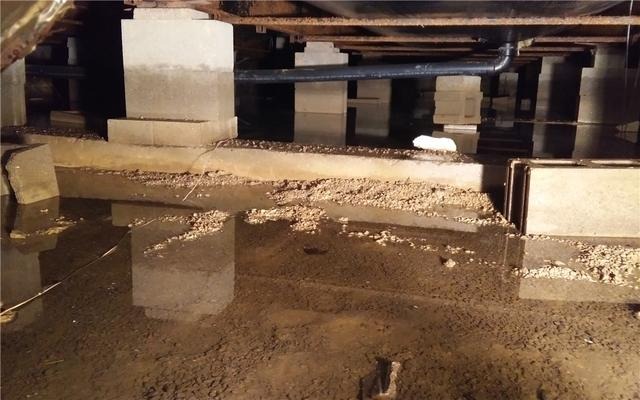
Preventing future water issues in the crawl space involves implementing preventive measures such as proper grading, effective drainage systems, and waterproofing solutions to maintain a dry and secure environment within the house.
Proper grading is crucial as it ensures that water drains away from the foundation instead of pooling around it. This helps in avoiding water seepage into the crawl space. Implementing effective drainage systems such as French drains can further aid in diverting water away from the house.
In terms of waterproofing solutions, applying a durable membrane or sealant to the walls and floor of the crawl space can provide an extra layer of protection against moisture intrusion. Pairing this with proper ventilation can also help in reducing humidity levels and preventing mold growth.
Proper Grading and Drainage
Ensuring proper grading and effective drainage systems around the house can prevent water accumulation in the crawl space by directing the flow away from the foundation and maintaining optimal moisture levels within the space.
By meticulously grading the land around a home, you can aid in ensuring that rainwater and surface runoff do not seep into the crawl space, averting potential issues like mold, rot, and structural damage.
- A well-graded slope allows water to naturally flow away from the house, minimizing the risk of water pooling near the foundation.
Strategic placement of drainage systems such as French drains or gutter downspouts can further divert excess water, safeguarding the integrity of the property.
Regular Maintenance and Inspections
Learning how to maintain a healthy crawl space is crucial, including checking for leaks, maintaining drainage systems, and monitoring moisture levels, are crucial to identify and address potential water issues proactively.
By conducting routine maintenance tasks such as inspecting for any signs of water intrusion, homeowners can prevent costly water damage and mold growth. Keeping the drainage systems clear of debris ensures proper water flow away from the foundation, reducing the risk of water buildup in the crawl space. Monitoring the moisture levels regularly helps in detecting any fluctuations that might indicate underlying issues, allowing for timely intervention and maintenance.
Waterproofing Measures
Implementing waterproofing measures in the crawl space, such as sealing foundation cracks, installing vapor barriers, and applying water-resistant coatings, can effectively prevent water infiltration and maintain a dry, secure environment.
Plus sealing cracks and barriers, proper drainage systems are crucial in keeping moisture at bay. Redirecting water away from the foundation can significantly reduce the risk of water seepage into the crawl space. Moisture control is essential to prevent mold growth, wood rot, and other structural damage.
A professionally installed vapor barrier acts as a protective shield, blocking moisture from the ground, further enhancing the effectiveness of the waterproofing strategy. Applying specialized coatings on the walls and floor adds an extra layer of protection against water intrusion, ensuring long-term structural integrity.
Frequently Asked Questions about The Ultimate Guide To Crawl Space Water Removal
What is crawl space water removal and why is it important?
Crawl space water removal refers to the process of removing unwanted water from the crawl space underneath a building. This is important because excessive water in the crawl space can lead to a variety of issues such as mold growth, structural damage, and even health hazards.
How do I know if my crawl space needs water removal?
Some signs that your crawl space may need water removal include musty smells, visible water or moisture, and sagging or warped floors. These are indicators that there is excess water in the space that needs to be addressed.
Can I remove water from my crawl space on my own?
While minor leaks or moisture in the crawl space can be addressed by homeowners, it is best to leave major water removal to professionals. They have the necessary equipment and expertise to safely and effectively remove the water and prevent further damage.
What are the steps involved in crawl space water removal?
The first step is to identify the source of the water and address it. Then, the water is extracted using pumps and vacuums. Once the water is removed, the area is thoroughly dried and dehumidified to prevent future mold growth. Finally, any damaged materials are replaced and the space is properly sealed to prevent future water intrusion.
How long does crawl space water removal typically take?
The duration of crawl space water removal depends on the severity of the issue and the size of the crawl space. On average, it can take anywhere from a few days to a week to completely remove the water and dry out the space.
Can crawl space water removal prevent future water issues?
While crawl space water removal can address current water issues, it is not a guarantee against future problems. It is important to regularly inspect and maintain your crawl space to prevent future water intrusion and address any issues promptly.
